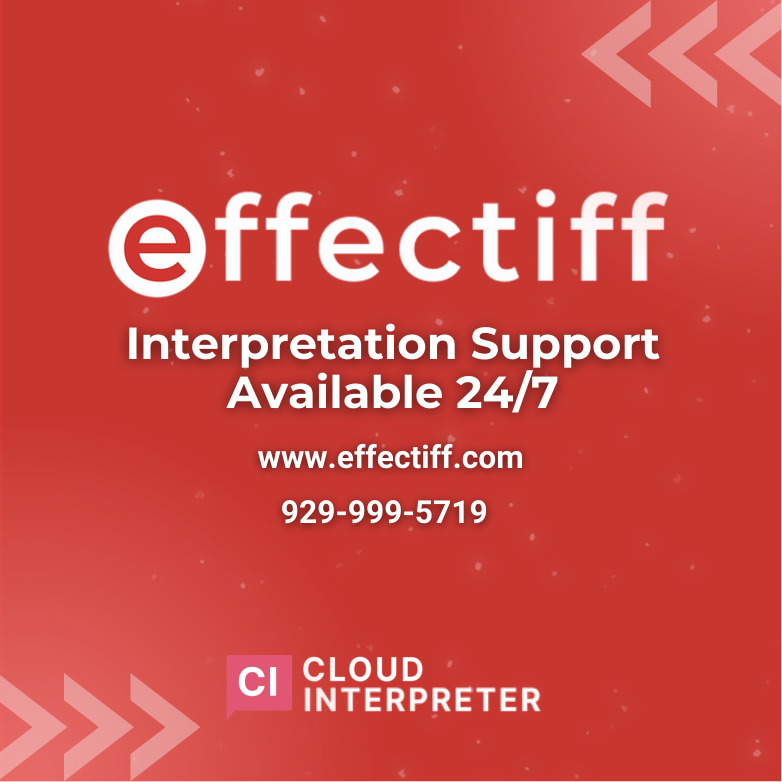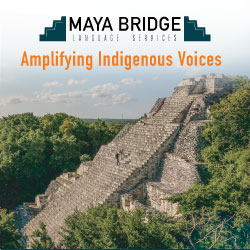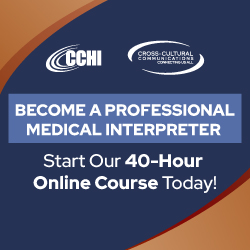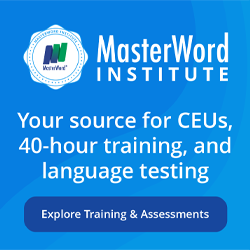This website uses cookies to store information on your computer to ensure you get the best experience using our website. By using the site, you consent to the placement of these cookies. Learn more.
Agree and dismissATA 2025 Conference Sessions Accredited by CEAP
Who: American Translators Association
CE hours accredited by CCHI (CEAP #10951):
Due to concurrent sessions, attendees may earn a maximum of 11 CE hours for 3-day attendance (Oct. 23rd – 3 CE hrs, Oct. 24 – 3 CE hrs, Oct. 25 – 5 CE hrs).
The following pre-conference workshops (AST Courses) on Wed (10/22/25) are accredited for 3 CE hours each, attendees can earn up to 6 CE hrs (as workshops are concurrent):
- AI-Powered Productivity Hacks: 100x Your Translation Speed and Efficiency!
- Demystifying NMT, Artificial Intelligence, and Large Language Models for Language Professionals
- AI and You: A Hands-On Workshop to Make the Most of Generative AI
- Terminología e Inteligencia Artificial: Estrategias Prácticas para Traductores Especializados
Performance Based:
- Deliberate Practice for Consecutive Interpreting: Practical Tools for Increasing Accuracy
- French-Language Master Class: A Deep Dive into Advanced Grammar
- Optimizing the Translator-AI Collaboration: Strategies for a More Efficient Workflow
- The Ins and Outs of Medical/Pharma Translation
- Remote Simultaneous Interpreting: An English to/from Spanish Workshop
Conference sessions accredited by CCHI/CEAP
Performance-based (PB) one-hour conference sessions:
- Arabic Interpreters in PFA Hearings
- Cinematic Memory: Techniques to Improve Confidence and Ease of Recall
- Practical Skills Development Workshop for Japanese to/from English Interpreters
- Speak like a native! How to Neutralize Accents and Increase Understandability and Confidence When Interpreting
- Vocabulary Building through Visual Context
General 1 CE hour:
| Educators and Instructors of T&I | 1.”AI Is Not Superhuman, We Are”: Upgrading Translators Skills in the AI Era |
| Audiovisual Translation | 2. A Career of Stepping Stones: T&I Means Transition and Innovation Part I |
| Audiovisual Translation | 3. A Career of Stepping Stones: T&I Means Transition and Innovation Part II |
| Terminology – French | 4. A Piece of Cake? The Challenge of Translating Food Idioms |
| Educators and Instructors of T&I – Spanish | 5. Academia Meets Real World: Collaborations between Interpreters and Translators in Classroom Settings |
| Diversity Equity and Inclusion in T&I – Spanish | 6. AI and Artisanal Intelligence: Navigating Inclusion in the Age of Technology |
| New Professionals – Spanish | 7. AI and the Interpreters’ Professional Attitude |
| Technology for Language Professionals | 8. AI Tools for Language Professionals |
| Diversity Equity and Inclusion in T&I – Spanish | 9. Beyond Intentions: Tackling the Real Challenges of Implementing Effective DEI Initiatives |
| Translation Theory & Skills Improvement | 10. Beyond Post-Editing: Enhancing Core Translation Competencies with MT and Generative AI |
| Language Access | 11. Bridging AI Gaps for Languages of Lesser Resources: Hands-On Strategies for Training Data and Real-World Solutions |
| Interpreting Theory & Skills Improvement | 12. Co-Interpreting in Teamed Assignments: Strategies for Promoting Accuracy and Completeness |
| Technology for Language Professionals | 13. Combining Regular Expressions and AI to Solve Tricky CAT Tool Problems |
| Conference Interpreting | 14. Conference Interpreter Pre-Flight: Checklists and Decision Trees for Success |
| Conference Interpreting | 15. Conference Interpreters on Zoom Assignments: Key Technical Insights for Successful Events |
| Conference Interpreting | 16. Dance with technology: Interpreters and non-humans in the evolving landscape |
| Medical | 17. Debriefing and Self Care for Medical Translators and Interpreters |
| Educators and Instructors of T&I – Spanish | 18. Empowering Future Interpreters: Harnessing Metacognition for Vocabulary Mastery in University Courses |
| Science and Technology | 19. English and Translation in the Era of Globalized Science |
| Technology for Language Professionals | 20. Enhancing Idiom Translation with Large Language Models: Chain-of-Thought Prompting for Precision and Cultural Adaptation |
| Ethics | 21. Ethics Beyond Human: Does Anyone Care? |
| Conference Interpreting | 22. Ethics in the Age of Technology: Empowering Interpreters to Shape the Future |
| Interpreting Theory & Skills Improvement – Spanish | 23. Foreignizing Interpreting in Central America |
| Business of T&I | 24. Freelance Freedom: Shift Your Mindset, Manage Risk, and Market Smart |
| Technology for Language Professionals – German | 25. From Hype to Hands-On: Real-World AI Adoption Among German to/from English T&I Professionals |
| Audiovisual Translation | 26. Getting Started with Transcription & Translation: Tools, Techniques, and Best Practices |
| Conference Interpreting – Japanese | 27. Handling the Unpredictable: Navigating Unexpected Situations in Interpreting |
| Technology for Language Professionals | 28. Hard Realities: AI in Translation and Interpreting Today and Tomorrow |
| Literary Translation | 29. Honing Our Craft: Translations with Peer-Based Review Groups |
| Technology for Language Professionals – Spanish | 30. How to Deal with the New Kid in Town: An Editor’s View on the Differences between Machine-Translated Texts and Human-Translated Texts |
| Ethics – Spanish | 31. Identifying Speakers of Mexican and Central American Indigenous Languages 2.0: Strategies for Spanish Interpreters In and Out of Court |
| T&I in School Settings | 32. Interpreting and Translation in K-12 Education: Nationwide Job Task Analysis Results |
| Medical | 33. Interpreting for Postpartum Care |
| Conference Interpreting – Japanese | 34. Interpreting Theories and a Holistic Approach for Japanese to/from English Interpreters |
| Grammar and Style – Japanese | 35. Katakana or Kanji? Using Loan Words in Japanese Interpreting |
| Ethics | 36. Labels on Translation Output: A Status Report and Call to Action |
| Language Access – Languages of Limited Diffusion | 37. Language Access for Healthcare Staff: Why and How |
| Language Access | 38. Language Access for Indigenous Peoples in Latin America |
| Literary Translation | 39. Learning from My Mistakes |
| Translation Theory & Skills Improvement – Japanese | 40. Learning from Our Errors: Common Mistakes in English-to-Japanese Scientific Translation |
| Legal – Spanish | 41. Legal Translation: Technique and Formulaic Language for Gender Identification |
| Technology for Language Professionals | 42. Lightning-Fast Terminology and Translation Searches with dtSearch |
| Technology for Language Professionals – Chinese | 43. LLMs That Read Notes, Infographics & More: Use Cases and Limitations |
| Interpreting Theory & Skills Improvement – Chinese | 44. Lost and Found: Defying the Challenges of Chinese in Translation |
| Educators and Instructors of T&I – Chinese | 45. Lost in Idioms: Navigating Top English Pitfalls for Mandarin Interpreters |
| Technology for Language Professionals | 46. Low Resource Languages Are Exciting: Using AI to Expand Resources for a Local Language Variant |
| Translation Theory & Skills Improvement – Japanese | 47. My Literal Translation Doesn’t Work – Now What? |
| Terminology – Slavic Languages | 48. New Directions on the Contact Line: How the Russia-Ukraine War Changed Terminology |
| Educators and Instructors of T&I – Japanese | 49. Panel Discussion: Formal T&I Training Programs – What’s So Great about Training Anyway? |
| Terminology – Italian | 50. Pasticceria, Panificio e Più: A Primer on the Art of Italian Pastries and Breads |
| Language Access – German | 51. Pennsylvania Dutch: From Past to Present |
| Technology for Language Professionals | 52. Personalizing AI: How Translators Can Host and Fine-Tune AI Models without the Cost |
| Medical | 53. Pharmacology for Medical Translators: Terminology, Regulations, and Best Practices |
| Literary Translation – French | 54. Poitrine fumé or Smoked Bacon? Navigating the Nuances of Culinary Translation |
| Business of T&I | 55. Power Up Your Freelance T&I Business through Client Education |
| Interpreting Theory & Skills Improvement | 56. Practical Strategies for Improving Your Consecutive Interpreting |
| Business of T&I | 57. Presidents’ Panel: Strategies for a Changing Future |
| Technology for Language Professionals – Japanese | 58. Professional Forum: Artificial Intelligence’s Impacts and AI as a Tool for Japanese & English linguists |
| Diversity Equity and Inclusion in T&I – Languages of Limited Diffusion | 59. Remote Relay Collaboration for Languages of Lesser Diffusion |
| Technology for Language Professionals | 60. Reshaping Our Jobs Together: Reinvention with AI |
| Technology for Language Professionals | 61. Roundtable on AI in Interpreting |
| New Professionals | 62. Smart Habits for Novice Translators: Practical Strategies for Success |
| Business of T&I | 63. Staying Ahead of the Curve |
| Technology for Language Professionals | 64. Supercharge Your Interpreting Prep: Gain a 20x Edge with Generative AI |
| Diversity Equity and Inclusion in T&I | 65. Teaching Implicit Bias Awareness in the Interpreting Classroom: Recognizing and Addressing Language-Based Assumptions |
| Technology for Language Professionals | 66. The Inner Lives of CAT Tools |
| Medical | 67. The Language of Palliative Care |
| Technology for Language Professionals | 68. The Multi-Range Theory of Translation Quality Measurement: Linear and Non-Linear MQM Scoring Models and Statistical Quality Control |
| Medical – Spanish | 69. The Need for an Expert Eye in the Translation of Clinical Trial Protocols |
| Interpreting Theory & Skills Improvement | 70. The Power of Speaking Up: How Interpreters Can Safeguard Patient Safety and Advocate with Confidence |
| Language Access | 71. Thinking Macondian: Curiosity, Language, and Hidden Opportunities Part I |
| Language Access | 72. Thinking Macondian: Curiosity, Language, and Hidden Opportunities Part II |
| Grammar and Style – Spanish | 73. Translating Conversations, Text Messages, and Other Low-Register Texts |
| Translation Theory & Skills Improvement – Spanish | 74. Translation Techniques: From Practice to Theory |
| Language Access | 75. Understanding Language Access vs. Language Justice: Pillars of Equity and Inclusion |
| Terminology | 76. What We Talk About When We Talk About Taste: The Language of Flavor |
| Science and Technology | 77. Working with Large Language Models: Best Practices & Recognizing Hallucinations Part I |
| Science and Technology | 78. Working with Large Language Models: Best Practices & Recognizing Hallucinations Part II |
















